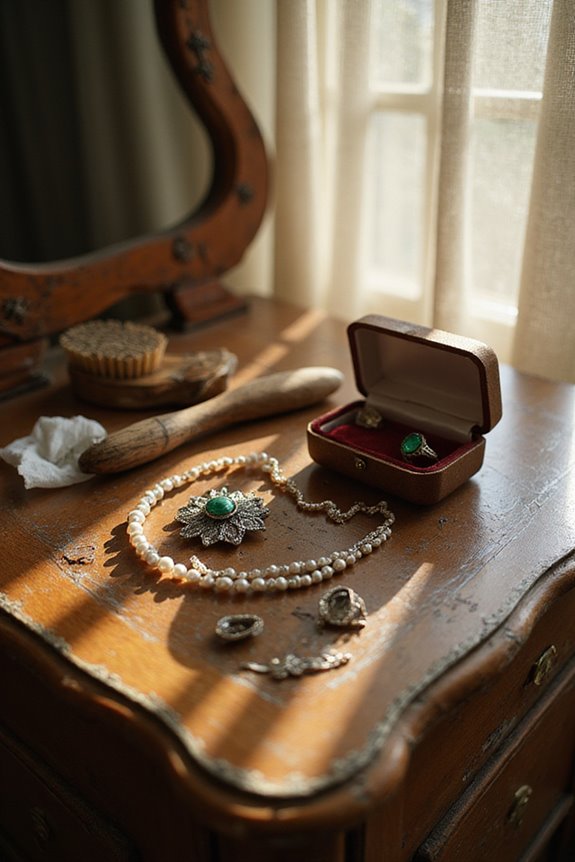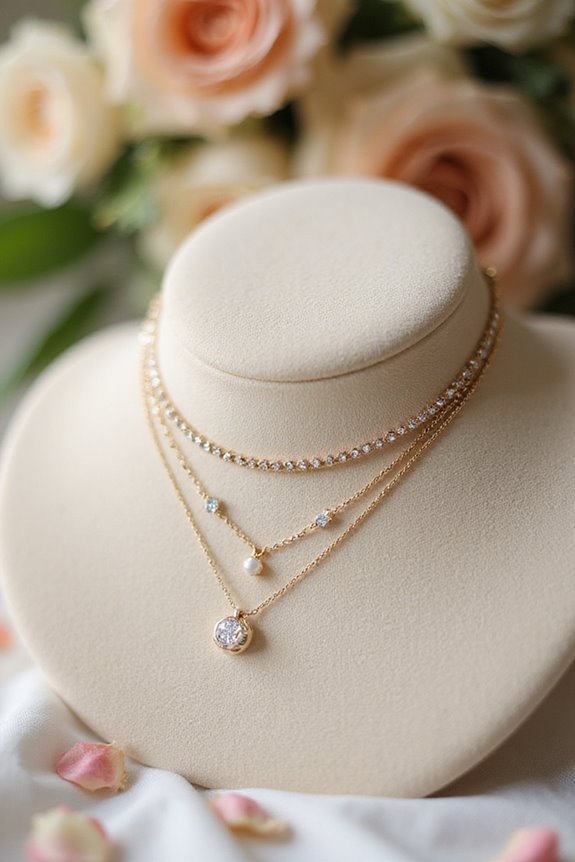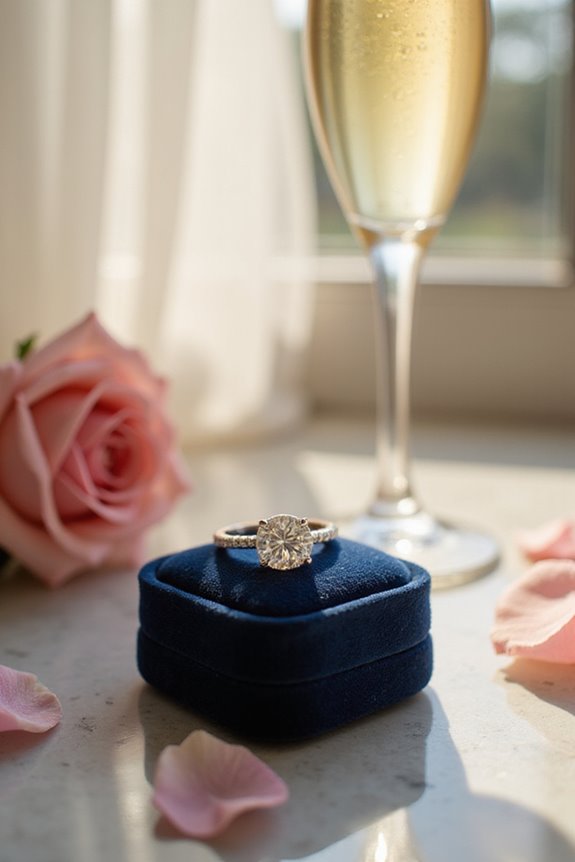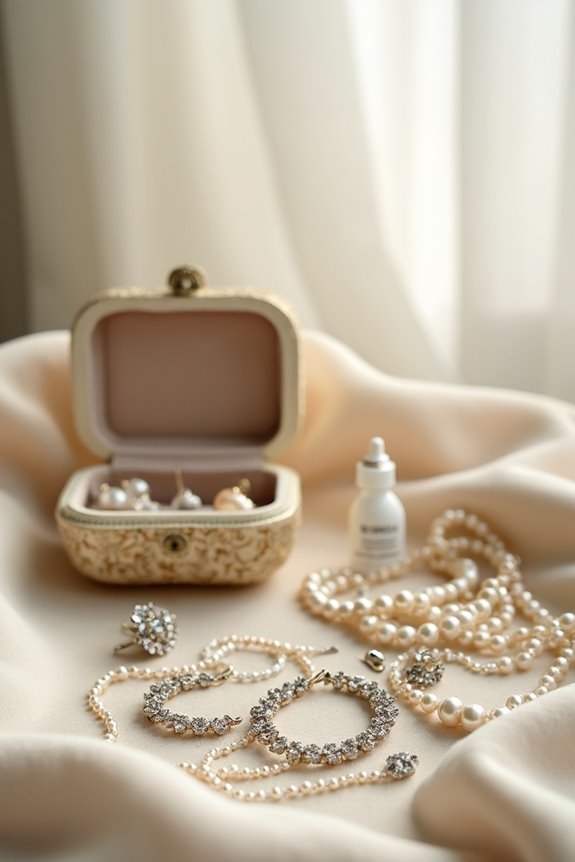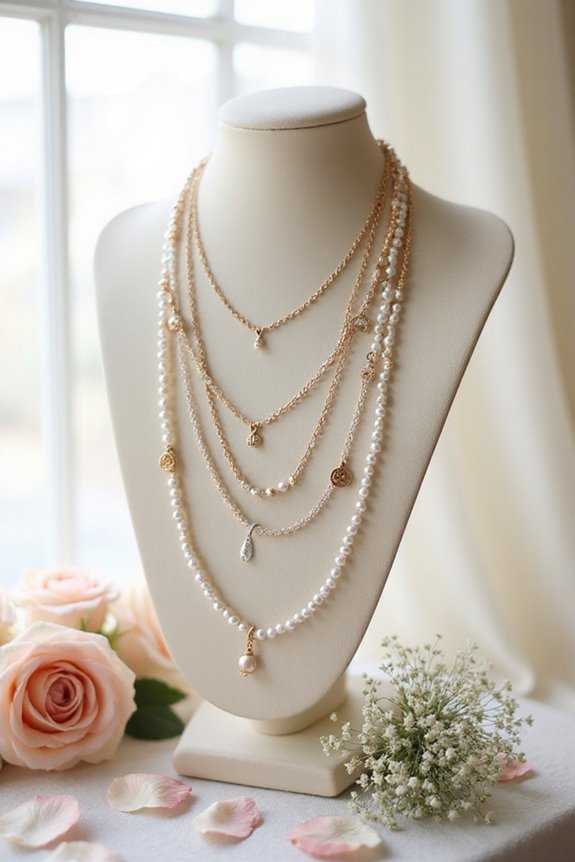Caring for vintage jewelry is all about love and protection. First, let’s clean gently with mild soap and water, using a soft brush for those tricky spots. When handling, we should wear cotton gloves to avoid skin oils and hold pieces by sturdier parts. For storage, keep them separate in soft pouches to prevent scratches. Don’t forget routine checks for cracks or weak chains! Want even more personalized tips to keep your treasures pristine?
Key Takeaways
- Clean vintage jewelry using mild soap and warm water, avoiding harsh chemicals that can harm metals and gemstones.
- Handle pieces gently with soft cotton gloves to prevent skin oils from transferring and damaging the items.
- Store jewelry separately in soft cloth pouches or padded boxes to avoid scratches and tangling.
- Conduct routine visual inspections for wear and damage, addressing any issues promptly with professional help if necessary.
- Protect jewelry from moisture and direct sunlight to maintain its condition and vibrancy over time.
Cleaning Vintage Jewelry
When it comes to cleaning vintage jewelry, we want to treat our precious pieces with the care they deserve. Using gentle techniques is key. For most items, a simple mix of mild soap and warm water works wonders. We should avoid harsh chemicals that can ruin metals and dull gemstones—trust us, it’s not worth the risk!
A soft brush, like a toothbrush, can help us get into those tricky spots without damaging anything. Remember to rinse thoroughly and dry our treasures with a lint-free cloth. If we’re dealing with delicate pieces, it’s best to skip the ultrasonic cleaners. Instead, let’s focus on preserving that lovely patina! After all, a little care goes a long way in keeping our vintage jewelry shining bright.
Handling With Care
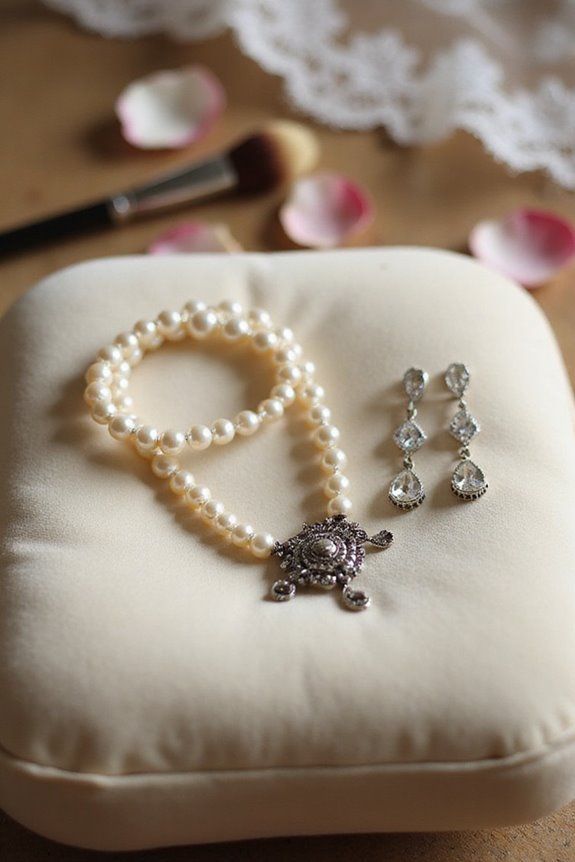
Handling vintage jewelry requires a bit of extra care, especially after we’ve just cleaned those beautiful pieces. First, let’s remember gentle handling is key. We should always use soft cotton gloves or clean cloths to avoid transferring skin oils. If we can, let’s hold pieces by sturdier parts, like the band of a ring, instead of the delicate bits.
Next, we want to protect our treasures from environmental damage. Avoid direct sunlight and moisture, and let’s steer clear of food and drinks while handling. Using a jewelry tray can help keep things secure. Finally, let’s limit how often we handle these pieces, saving them for special occasions. This way, we can cherish our vintage jewelry for years to come!
Proper Storage
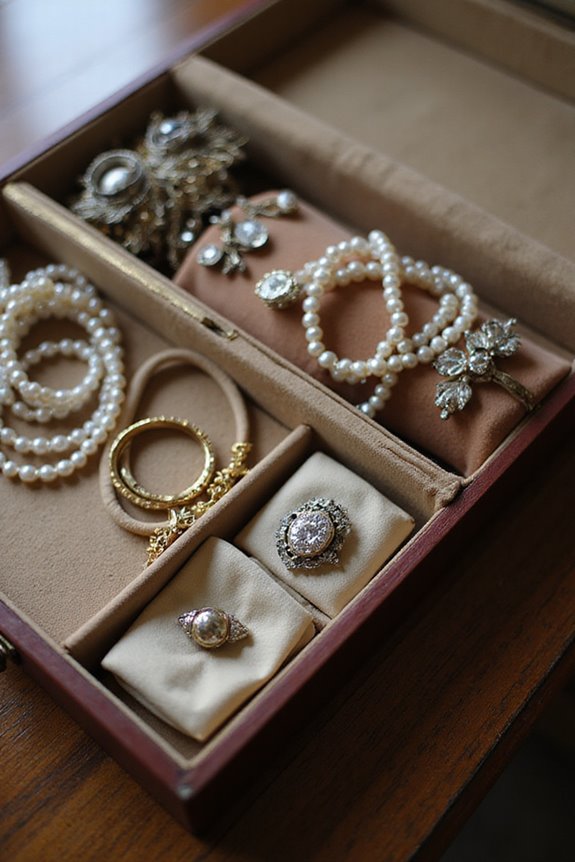
Proper storage is essential for keeping our vintage jewelry looking fabulous over the years. First, let’s separate each piece to prevent scratches and tangling. Soft cloth pouches or padded boxes are perfect for delicate items. Remember, stacking isn’t our friend! For delicate chains, hanging storage works wonders. Now, let’s talk about suitable containers. Jewelry boxes with compartments and anti-tarnish lining can save us from tarnishing woes. Avoid those zip-lock bags; they trap moisture like a clingy friend. We should store our treasures in a cool, dry place, away from sunlight and heat. Regularly checking on our jewelry helps us catch any issues early. With these storage techniques and a little jewelry organization, we’ll keep our vintage pieces safe and sound!
Avoiding Harsh Chemicals and Environmental Damage
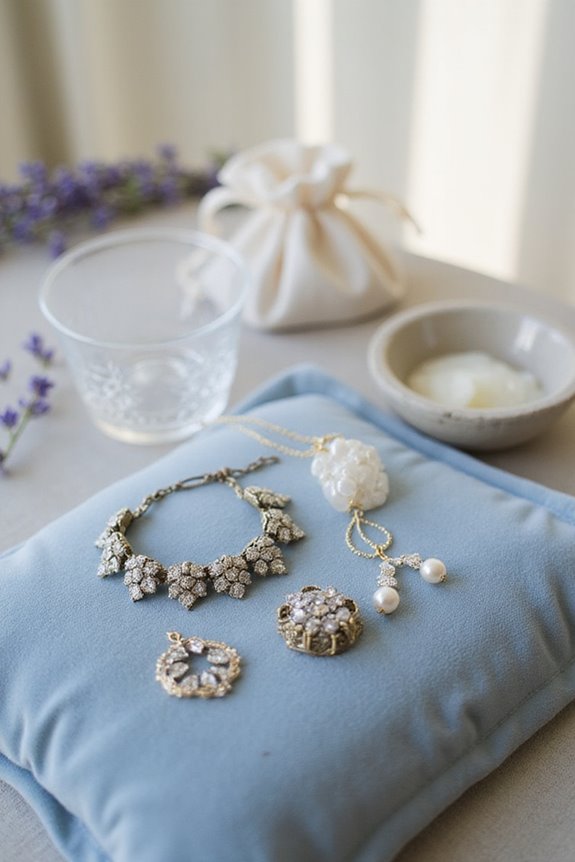
Taking care of our vintage jewelry is like nurturing a delicate friendship; we need to avoid harsh chemicals and environmental damage to keep it shining bright. Instead of using bleach or ammonia, let’s opt for gentle soap solutions or specialized silver polishing cloths. These chemical alternatives protect our antique treasures from corrosion.
Moisture can be a villain too! Foiled gems hate humidity—so, let’s remove them before showering or washing hands. A protective sealant can be our superhero, creating a barrier against moisture. Flitz Ceramic Sealant is a great choice.
Lastly, let’s keep our vintage pieces away from direct sunlight. They’ll thank us by staying vibrant and beautiful for years to come!
Routine Inspection and Maintenance
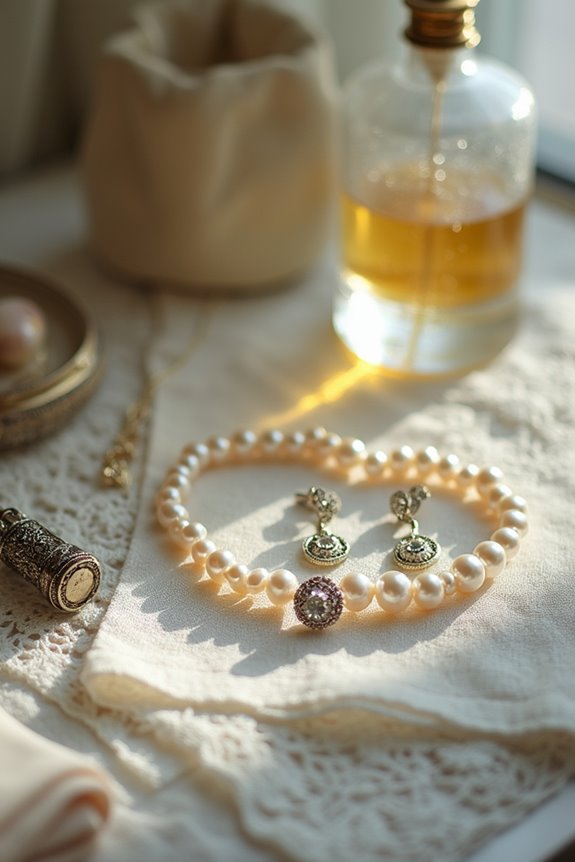
Once we’ve safeguarded our vintage jewelry from harsh chemicals and moisture, it’s time to focus on routine inspection and maintenance. We should start with a visual inspection. Check clasps, prongs, and settings for looseness. If we spot cracks or chips in gemstones, it might be time for a professional evaluation. Don’t forget to look at chains and solder joints for any signs of weakness.
Cleaning should be gentle—mild soap and a soft brush will do. Let’s avoid soaking our treasures.
Finally, let’s schedule periodic professional inspections. A jeweler can help spot hidden issues before they become bigger problems. Remember, a little upkeep goes a long way in keeping our vintage pieces looking fabulous!
Frequently Asked Questions
How Can I Identify Genuine Vintage Jewelry?
To identify genuine vintage jewelry, we should look for vintage jewelry marks, examine jewelry age indicators, and recognize distinctive craftsmanship. By understanding these elements, we can confidently differentiate authentic pieces from modern reproductions.
What Are the Signs of Vintage Jewelry Authenticity?
When evaluating vintage jewelry authenticity, we should look for clear maker’s marks and conduct a patina examination. Genuine pieces often show signs of age, while fakes tend to lack these distinctive characteristics that confirm their history.
Can I Repair Vintage Jewelry Myself?
Can we really repair vintage jewelry ourselves? While some vintage tools and gentle repair techniques might work, we must tread carefully. Missteps could harm its beauty or value—it’s often best to consult a professional.
How Do I Know if My Jewelry Is Valuable?
To determine if our jewelry’s valuable, we should follow jewelry appraisal tips, focusing on evaluating metal quality and hallmarks. Consulting experts and researching market trends can also help us gauge our pieces’ worth effectively.
What Should I Do if a Stone Falls Out?
If a stone falls out, we should explore stone replacement options by examining gemstone settings. Searching for the lost gem and cleaning the area can help, but professional assistance guarantees a secure and authentic restoration.

